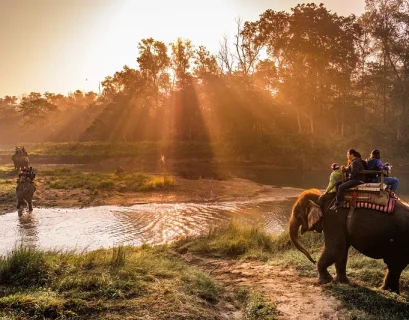Nepal, a land of breathtaking landscapes, is also a country rich in spirituality and religious heritage. With a long history of Hinduism and Buddhism, the country is home to some of the most sacred temples and monasteries, which not only hold religious significance but also embody Nepal’s deep cultural roots. Whether you’re seeking tranquility, spiritual enlightenment, or a deeper understanding of the country’s traditions, Nepal’s sacred sites are an essential part of the travel experience.
Famous Temples and Sacred Sites in Nepal
- Pashupatinath Temple
- Location: Kathmandu
- Significance: Dedicated to Lord Shiva, Pashupatinath is one of the holiest temples for Hindus worldwide. Located on the banks of the Bagmati River, the temple complex is a UNESCO World Heritage site and hosts elaborate rituals, especially during festivals like Maha Shivaratri.
- What to Expect: Sacred ghats, cremation ceremonies, and intricate temple architecture.
- Boudhanath Stupa
- Location: Kathmandu Valley
- Significance: Boudhanath Stupa is one of the largest in the world and a center for Tibetan Buddhism. It’s a focal point of spiritual life in Nepal for Tibetan Buddhists, with its massive mandala and hundreds of prayer flags fluttering in the wind.
- What to Expect: Circumambulation around the stupa, chanting, prayer wheels, and an atmosphere of profound serenity.
- Swayambhunath (Monkey Temple)
- Location: Kathmandu Valley
- Significance: This ancient stupa sits atop a hill and provides panoramic views of Kathmandu. Swayambhunath is revered by both Hindus and Buddhists, symbolizing the union of the two faiths in Nepal.
- What to Expect: A steep climb to the stupa, monkeys roaming freely, and an abundance of spiritual offerings.
- Lumbini
- Location: Rupandehi District, Western Nepal
- Significance: The birthplace of Lord Buddha, Lumbini is a UNESCO World Heritage site and a major pilgrimage destination for Buddhists. The site features a sacred garden, the Maya Devi Temple, and numerous monasteries and stupas built by different countries.
- What to Expect: Peaceful gardens, the sacred pool where Buddha was bathed, and the ancient Ashoka Pillar.
- Muktinath Temple
- Location: Mustang District
- Significance: One of the holiest sites for Hindus and Buddhists, Muktinath is believed to be a place of salvation. The temple is set at the foot of the Thorong La Pass in the Annapurna region and attracts thousands of pilgrims each year.
- What to Expect: A unique blend of Hindu and Buddhist traditions, with 108 water spouts symbolizing purification.
Spiritual Practices in Nepal
Nepal’s sacred sites are not just for sightseeing; they are living places of worship and spiritual practice. Visitors can witness:
- Puja Ceremonies: Hindu and Buddhist rituals that involve offerings, prayers, and chants, often performed by priests or monks.
- Meditation and Yoga: Many monasteries and temples offer meditation retreats, yoga classes, and spiritual healing practices, giving visitors an opportunity to immerse themselves in the spiritual ambiance of Nepal.
- Festivals: Festivals like Dashain (Hindu festival) and Buddha Jayanti (celebrating Buddha’s birth, enlightenment, and death) provide an opportunity to experience Nepal’s spiritual and cultural vibrancy.
Why Visit Nepal’s Sacred Sites?
- Deep Cultural Immersion: Visiting temples and monasteries allows you to experience the daily religious practices and spiritual traditions of Nepal.
- Peace and Serenity: Whether you’re seeking solace in meditation or simply want to enjoy the quiet beauty of a temple, Nepal’s sacred sites offer a calm and peaceful environment.
- Rich History and Heritage: Many of these sites are ancient and have been preserved for centuries, giving you a glimpse into Nepal’s rich spiritual heritage.
- Spiritual Enlightenment: Nepal is a place where many come to seek inner peace and enlightenment, making it an ideal destination for spiritual growth.
Tips for Visiting Sacred Sites in Nepal
- Respect Local Customs: Be mindful of local traditions and always ask permission before taking photos, especially in sacred places.
- Dress Modestly: When visiting religious sites, it’s recommended to wear modest clothing and remove your shoes before entering temples or monasteries.
- Take Time to Reflect: Many of these places are serene and spiritual; take the time to sit in contemplation or prayer, even if you’re not religious, to absorb the peaceful atmosphere.
Nepal’s spiritual sites are not only visually stunning but also offer an enriching experience that connects you with the soul of the country. Whether you’re seeking a deeper connection with your spirituality or simply exploring Nepal’s ancient religious traditions, these sacred places will leave you with memories that last a lifetime.











